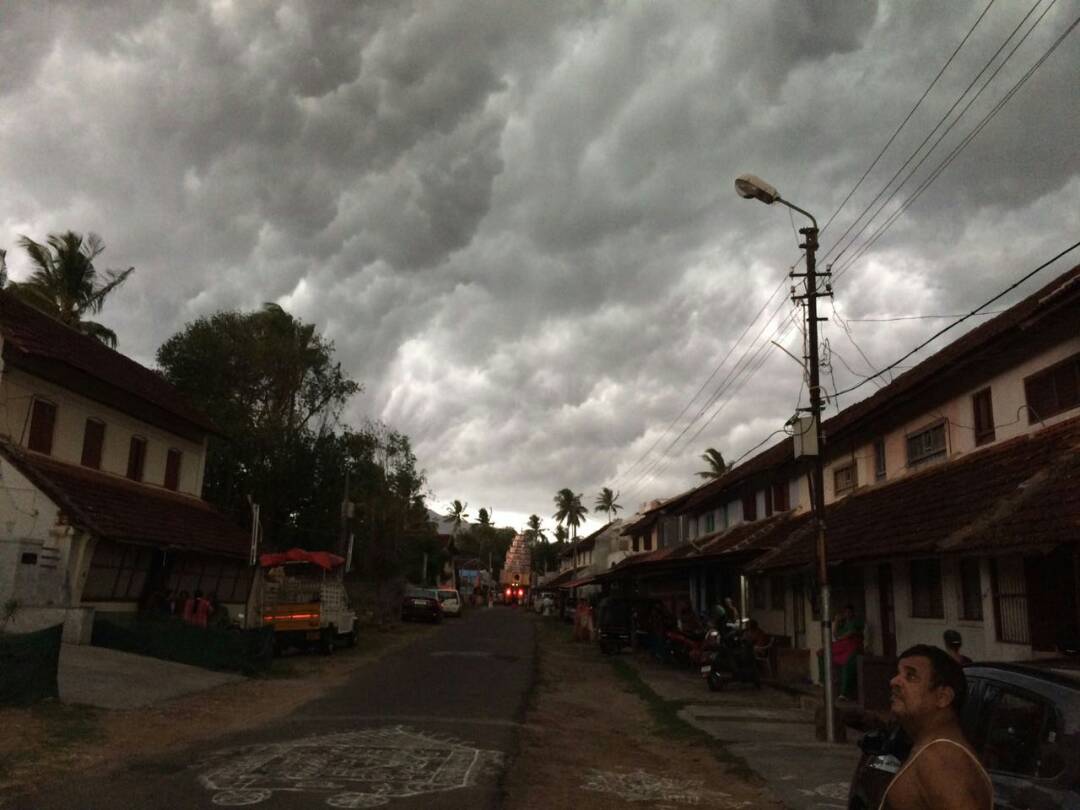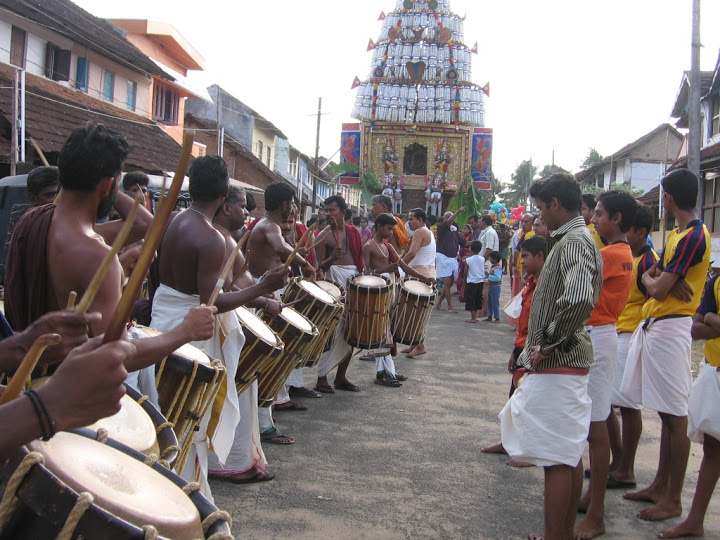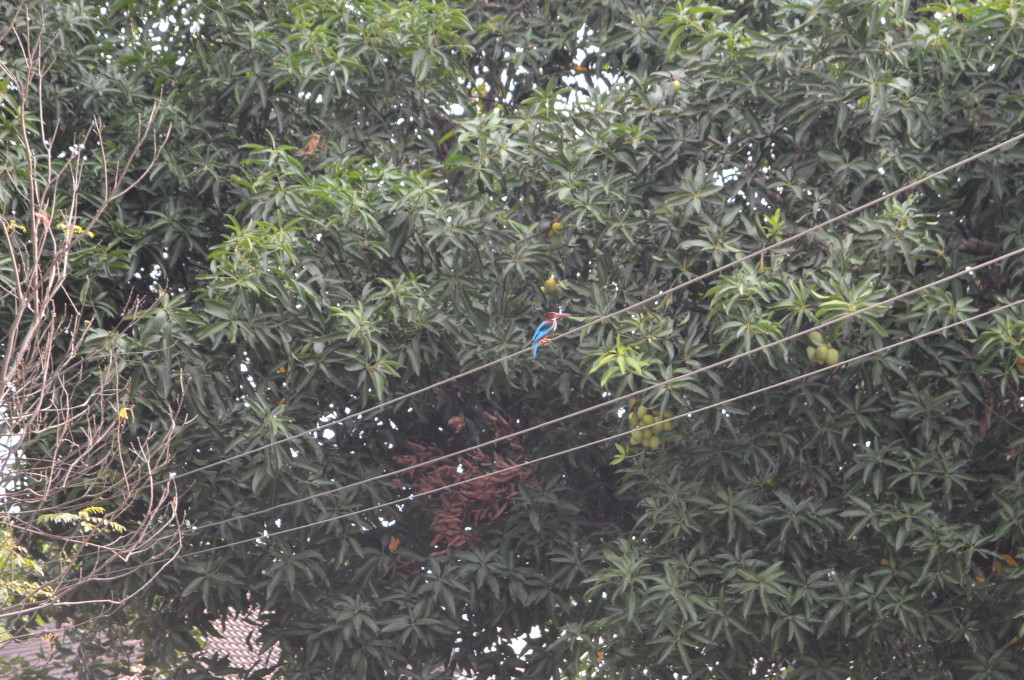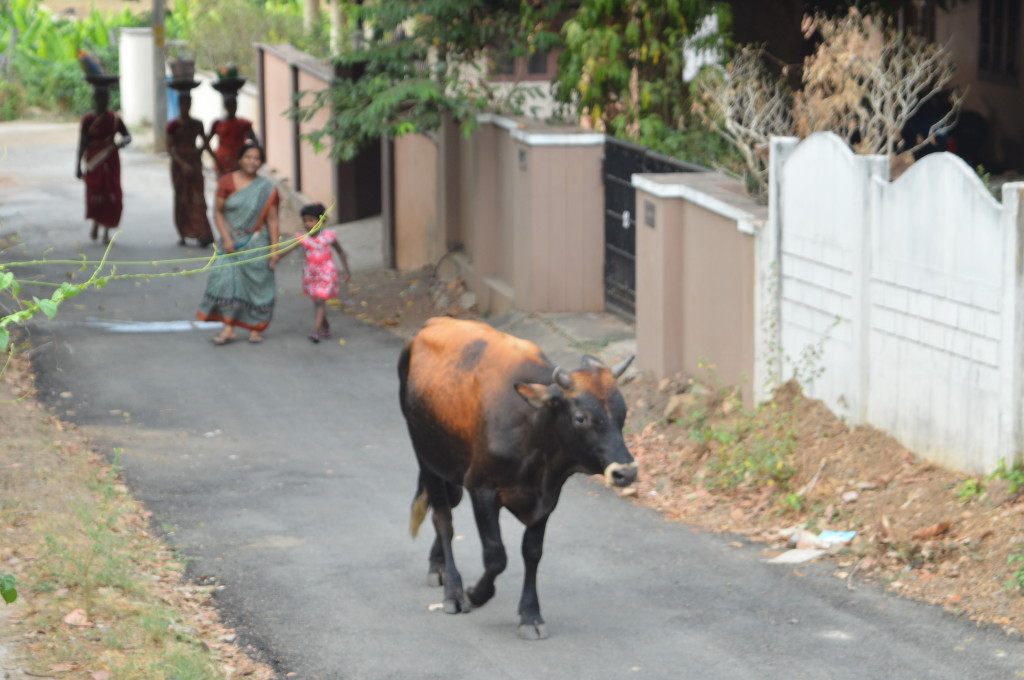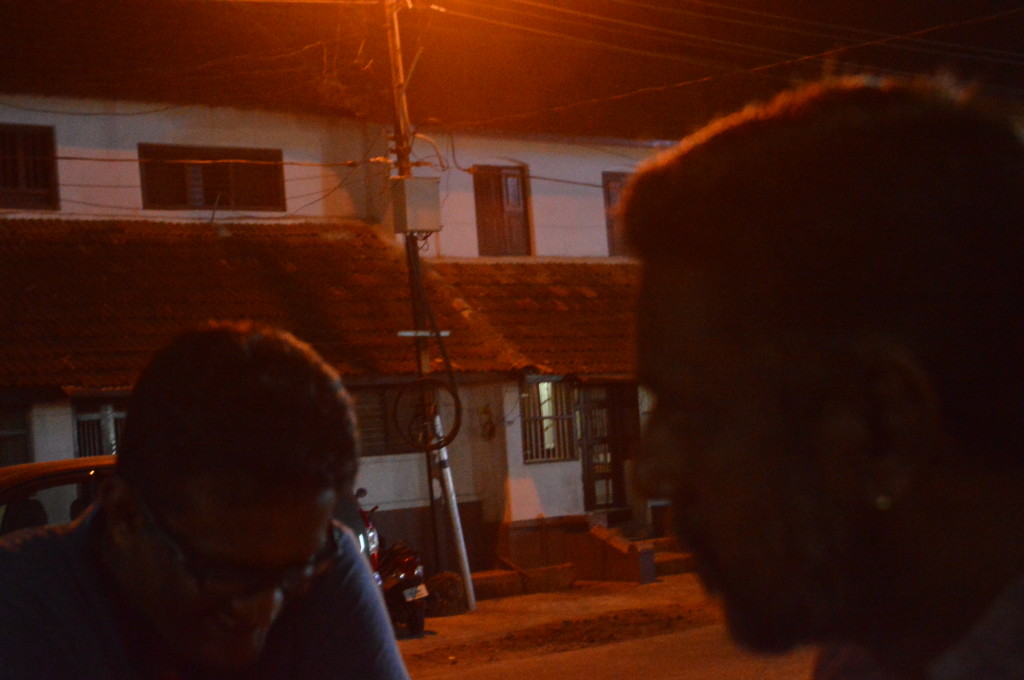Travel Tales to Palakkad
- Hama Iyer Ramani
The best way to learn I have discovered is to travel. It is like reading an original book- discovering things first-hand. There is tremendous joy in always leaving behind a home that is ridden with mundane problems, seemingly endless chores, the drudgery of a routine in short! It is like the frog in the well experiencing and breathing new freedom outside- an entire world waiting to be discovered with all its beauty and short-comings.
My brief stay in Palakkad helped me rediscover the simple joys of life that I seemed to have forgotten at least for a while. While the bustling city life has its numerous advantages, I sometimes feel the disconnect that it also brings with it. In the quiet village home in Palakkad, I am quite happy to be without wi-fi and my laptop. My senses are alert and I realized I had become more observant. Summers in Palakkad are quite unbearable and the monsoons are awaited eagerly.
There are row houses facing each other, and every morning would see the women of the homes wash the black Cuddappah stone laid neatly in front of each home and draw out the perfectly drawn kolam out of rice flour to be seen in contrast to the back background. Kolams are almost like graphology- just as you can read from a handwriting, so also kolams tell stories about their authors ! Some are drawn out of mere routine, some in a hurry, some out of compulsion , but the ones that stand out are simple ones drawn out of love. There is a delicacy in each perfect line , and festive occasions would mean more elaborate kolams, drawn out of freshly soaked and ground rice, a liquid that like paint is ore free-flowing and does not get erased away that easily unless the intention is deliberate!
Palakkad is essentially the corridor that allows entry into Kerala because of the Palakkad gap, that is a low mountain pass that bridges Coimbatore to Palakkad and cuts through Nilgiri hills and Anaimalai hills. The Bharatapuzha river that originates from here caresses the entire place along with her tributaries . It is a feast to the eyes to watch the lush green paddy fields , the many rivulets, the swaying coconut palms dotting the horizon and the shore and the several colourful birds that find haven in these surroundings. The clear blue skies add to the hues of the blue green waters of the rivers, and it is here that I have found every home with at least a few “basic” trees!
The evening sky glows with the red sky reflecting its glory on its red-tiled roofs. Then as darkness spreads its blanket across the sky, the moon rises shining like a large lamp and the temple priest lights up the temple bringing light from the corner of the street. Then one by one, all lights in the villages are lit. The evening prayers begin and as the priest raises the aarti plate, the entire village stands with folded palms praying from the sacred space of their own homes, thus symbolically taking in the sacredness from across the temple to the altar of their homes. The villages in Palakkad were essentially agraharams(Brahmin residents) and the oldest among them being Kalpathy , which has been regarded as a heritage village. The temple chariot rituals in each of these villages are worthy of participation and are rich memories to carry back home.
The village homes are large and airy, well ventilated with wooden roofs and beams and wooden stairs that lead to the bedrooms of the main part of the house. There is a central court yard which doubles as a wash area to clean hands and legs should one come in from outside. It is quite a treat to hear the sound of rain on these tiled roofs and when they pour down the roof, they almost resemble a mini waterfall !
There is a sense of participation from the entire village when it comes to temple festivals, weddings or even solemn occasions of the passing away of a village resident. It is then that we understand how much we miss the human strength and support when we distance ourselves from the cultural roots.
It was here that I enjoyed teaching my children how to learn from residents how to be resourceful. When my son wanted to play cricket and we did not have a bat- (we had to go to the town to source it), my uncle came with a solution. He used the thick base portion of the coconut frond and easily chiselled out a well-shaped out though rustic bat. When my son found the grip on the handle not too good, my mother promptly came up with a solution- use the jute rope; when the rope was coiled around the handle, it not only looked aesthetically beautiful, it also enabled better grip. It was the first lesson in resourcefulness. The ability to think quickly comes in with being thrown to basics- when solutions do not land on a plate, the mind begins to work. They soon learnt how to send rockets flying in the air using the coconut leaves! Children learnt to make bracelets and coconut –leaf balls too! By the end of the vacation , they had learnt to identify the vegetables and flowers better- Botany seemed fun this way , and all without any compulsion! Soon they found that among all other trees in the garden- a small farm(!), the coconut and the plantain tree could be regarded truly special- every part of the tree could be put to use!
As we plucked the jasmine flowers for my mother who would weave it into a beautiful strand, I found my uncle suddenly quiet as he drew me away from the malli bush. High alert. None of us moved- all remained quiet. After six minutes, we saw a long snake slither away! I gasped- my uncle said: “Pooh, it is only a cherai (rat snake)!” It drew my attention to the fact that living in the quiet of the countryside perhaps teaches us to be alert and sensitive to Nature around us- to be conscious of little sounds, little movements, and more importantly the ability to respect space and species.
In later years, it was perhaps his training in early childhood that probably taught my son to respect creatures around him on his university campus too. He once used a long stick waiting for the snake that had slithered on to the main road, allowed it to settle on the stick before he could carefully put it away from the main road where it could possibly run the chance of being killed.
Vacations in Palakkad taught us to be happy with little, taught us to notice the animals at closer quarter- we understood the calls of birds- the large chemboth (Greater Coucal) , the king fisher, the wood pecker. We watched the flowers bloom, the fruits appearing and the ecstasy of drinking tender coconut fresh from the tree!
As I return to the city and get on to Facebook , I am reminded of the several thinnai ( small platforms ) conversations that we had as we got together each evening waiting for the temple priest to come. I realize the intimacy of the conversations with real people as the against the several ‘friends’ on FB who I have not seen in flesh!
— Hama Iyer Ramani
(A former lecturer of Political Science at Mount Carmel College, Bangalore, Chennai-based writer Hemalatha Ramani contributes to newspapers, magazines and blogs. She is the author of a travel book, Soulscapes: Travels and Conversations in India). She writes under the name of Hema Iyer Ramani.

